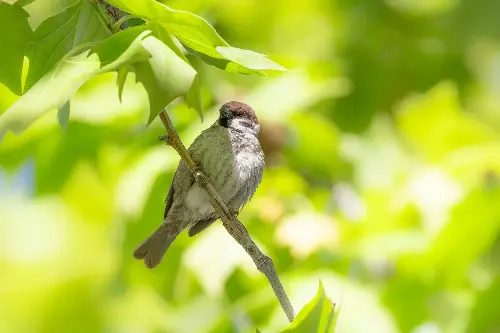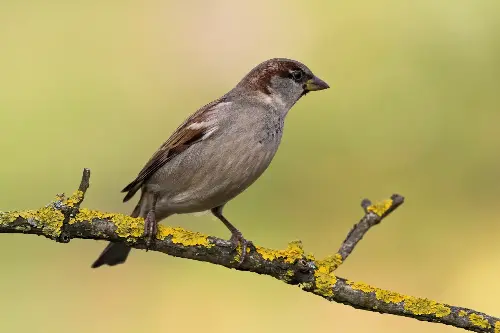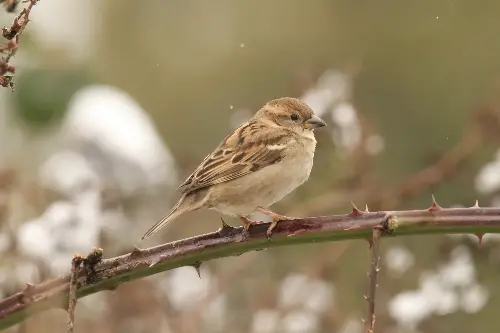The sparrow is an avian icon of urban areas and rural landscapes alike, a bird so familiar that it often goes unnoticed. Yet, behind its humble presence lies a tale of remarkable adaptability and a global journey that spans continents and climates. Join us as we uncover the past and present of one of the world's most recognisable and common birds.

With its plump body, round head, and stout bill, the sparrow, particularly the house sparrow (Passer domesticus), has made a home in nearly every corner of the globe. Native to Europe and Asia, this little bird has spread to the Americas, Africa, Australia, and even remote islands, becoming a global species without borders. It is a master of coexistence, thriving alongside human expansion, finding niches in urban mega-cities and rural farms.
The house sparrow's journey is believed to have begun thousands of years ago. Relevant fossils found in Middle Eastern archaeological sites suggest their ancient bond with humans. They followed the earliest farmers, feasting on the grains and seeds that agriculture provided. As human civilisations grew, so did the range of the sparrow, a highway of expansion built on the back of human trade and migration.
Europe presents a mosaic of sparrow populations, from the bustling cities of the United Kingdom to the tranquil Mediterranean. British sparrows, famed as the cheeky inhabitants of London’s Trafalgar Square, have become an integral part of the urban experience. However, in recent years, their numbers have seen a decline. Studies indicate a combination of factors such as air pollution, lack of insect prey for their young, and the loss of nesting sites could be to blame. This has sparked conservation efforts to ensure these chirpy companions remain a part of city life.
Across the English Channel, the continent of Africa offers a vastly different habitat, yet it is home to thriving sparrow populations. Adapted to the savannahs and grasslands, African sparrows have capitalised on human settlements to proliferate. Here, the social aspect of sparrows shines; they often form large, noisy flocks that share food resources and communal roosting areas, demonstrating their collaborative survival strategies.

Asia, with its diverse climates ranging from tropical to temperate zones, showcases the sparrow's adaptability. In some regions, sparrows are welcomed as symbols of luck and prosperity, while in others, they face threats from rapid urbanisation and changing farming practices. Nevertheless, the sparrow's tenacity is undeniable, and it continues to hold its own on the largest continent.
The journey of sparrows to the Americas is a more recent chapter, where they arrived in the mid-19th century. Introduced to control insect pests, they adapted quickly, so much so that they are now viewed as a nuisance in some parts and as competitors to native bird species. Despite this controversial status, the house sparrow has left an indelible mark on the avian landscape of North and South America.
The sparrow's Australasian adventures began during the British colonisation when settlers introduced them to Australia and New Zealand. While they've been successful in these regions, their presence has occasionally been to the detriment of local species.
It's not just the house sparrow that has made waves internationally. The world knows about 35 different sparrow species, each with its own unique traits and peculiarities. From the diminutive yet spirited American tree sparrow to the Iberian sparrow with its distinctive face pattern, the diversity within this bird family is astounding.

One of the most captivating aspects of the sparrow's tale is their influence on culture and literature. Sparrows have been symbols in various myths and religious texts, signifying everything from commonness to spiritual importance. Poets like John Keats celebrated them in their writings, while contemporary visual artists often use the sparrow as a motif to represent the ordinary yet essential elements of life.
Conservationists are increasingly concerned about the sparrow's future due to habitat loss and environmental changes. Citizen science projects like the Big Garden Birdwatch in the UK encourage people to take note of the sparrows in their vicinity, contributing to large-scale data collection and helping track population trends.
Despite the challenges, the sparrow's story is far from over. Their resilience, adaptability, and integral relationship with humans ensure that they remain a fascinating subject of study and conservation. Their global journey underscores the importance of biodiversity in our fast-changing world and how even the most common species can have an extraordinary tale to tell. With each chirp and flutter, the sparrow continues to write its chapters in the history of humankind's feathered companions. Through the efforts of researchers and bird lovers alike, we can ensure that this tale continues for generations to come, a mutual journey of coexistence on an ever-changing planet.
